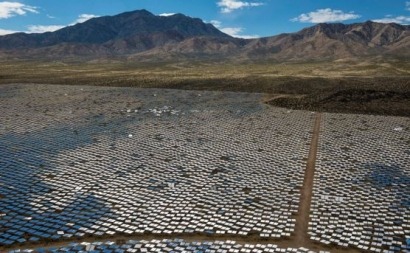
China remained the largest clean energy investor, accounting for $111 billion ($102 billion), while solar attracted the largest chunk of funding.
“These figures are a stunning riposte to all those who expected clean energy investment to stall on falling oil and gas prices,” said Michael Liebreich, chairman of the advisory board at Bloomberg New Energy Finance.
“They highlight the improving cost-competitiveness of solar and wind power, driven in part by the move by many countries to reverse-auction new capacity rather than providing advantageous tariffs, a shift that has put producers under continuing price pressure,” he said.
China is likely to include further actions to steer the country away from coal towards less polluting options in its 13th five year plan (2016-20), to be unveiled in March 2016. A national carbon emission trading programme – the world’s largest – is set to be launched, covering nearly 10,000 companies emitting 3-4bn tonnes of CO2.
Meanwhile, solar and wind tariffs for new plants were reduced from 1 January 2016. Bloomberg New Energy Finance expects new PV build in China to be 18-20 GW in 2016. For wind, it forecasts 20-23 GW in 2016 and 2017, and 19-20 GW in 2018-20. The note China cuts tariffs for PV, wind and coal provides more details of these forecasts.
A country that could join the renewables high-growth list soon is Iran, which is aiming for an “economic leap” after the lifting of sanctions. It already has a generous feed-in tariff programme for renewables, and a fairly strong pipeline of projects. BNEF expects the country’s non-hydro renewables capacity to increase from 400 MW at the end of 2015 to 5.6 GW by 2020, led by wind (3.9GW) and solar (1.4GW). Details of projects and developers in the country can be found in the recent note The wind blows Iran’s way.
The European Investment Bank announced that it would lend €100 billion ($109 billion) for climate action over the next five years. The Luxembourg-based development bank provided a record €20.6 billion ($24 billion) to green projects in 2015, it said in an e-mailed statement. It targets 25% of its total lending towards climate action, a proportion that was surpassed last year.
China National Building Materials signed a $1.6 billion agreement with a UK unit of Hong Kong-based Welink Global to develop solar power projects and energy-efficient housing in the UK.
In Turkey, the European Bank for Reconstruction and Development and the Clean Technology Fund formed a programme to lend $125m to develop geothermal in Turkey. The goal is to develop five geothermal power plants with a combined capacity of at least 60MW, the London-based development bank said in a statement.
The Development Bank of Japan and Japan Wind Development announced the creation of the nation’s first fund for wind power. They aim to introduce the JPY 50 billion ($423 million) joint fund in April.
There were also some announcements last week on expansion of manufacturing capacity: LG Electronics said it plans to invest as much as $435 million to build six high-efficiency solar manufacturing lines in South Korea and Yingli Green Energy said it will build its first overseas factory in Thailand as it seeks to grow outside China.
Activity in the green bonds universe picked up in the last quarter, though the total issues for the year were limited to $46 billion, compared to $39 billion in 2014.
For additional information:

